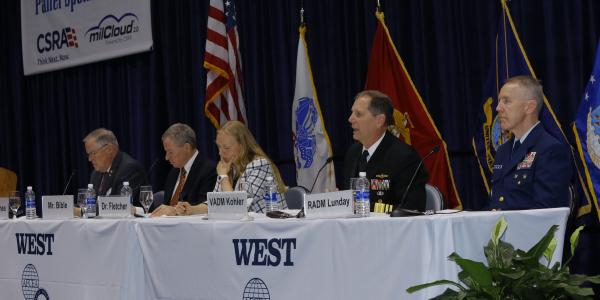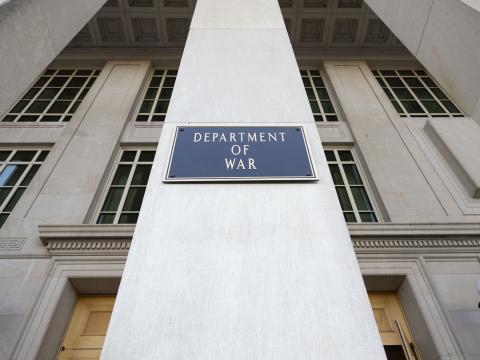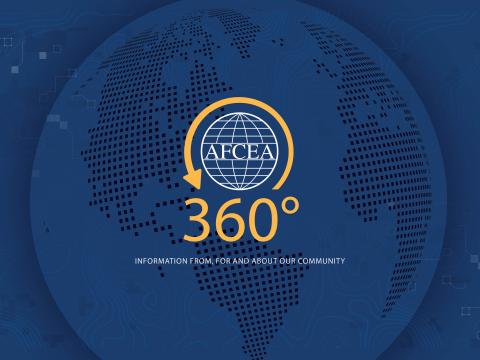Technology Reigns on Navy Operations
Now that the U.S. Navy is networked and fully cyber-enabled, it needs to ensure that its technologies improve efficiencies and effectiveness to a greater degree. How that is to be achieved was the topic of discussion by an afternoon panel of experts at West 2018, being held in San Diego February 6-8.
The most important elements in networks are people, and the most important networks are human networks.—Rear Adm. Kevin Lunday, USCG, assistant commandant, C4&IT and commander, U.S. Coast Guard Cyber Command #WEST2018
— Bob Ackerman (@rkackerman) February 6, 2018
Rear Adm. Kevin Lunday, USCG, assistant commandant, C4&IT and commander, U.S. Coast Guard Cyber Command, pointed out that, increasingly, technology in the physical domains is being networked in cyberspace. He added, “The most important elements in networks are people, and the most important networks are human networks.”
Vice Adm. Matthew J. Kohler, USN, commander, Naval Information Forces, said, “We need to go after smarter technologies that would make the network less labor-intensive.” Looking operationally, he added, “We must be able to maneuver all of our sensors, all of our networks, particularly in a contested environment.” And when the issue of spectrum arose, Kelly Fletcher, acting Department of Navy chief information officer (CIO), stated, “Just like the commercial sector, in tactical equipment we’re going to use less of the spectrum to do the same tasks.”
We need to go after smarter technologies that would make the network less labor-intensive.—Vice Adm. Matthew J. Kohler, USN, commander, Naval Information Forces #WEST2018
— Bob Ackerman (@rkackerman) February 6, 2018
Panel moderator Lt. Gen. Robert M. Shea, USMC (Ret.), president and CEO, AFCEA International, asked the panelists point-blank: “What are the most critical technologies to fully operationalize the network? Kenneth W. Bible, deputy director, C4/Deputy CIO, U.S. Marine Corps, cited free-space optics, saying their incorporation could revolutionize operations.
Fletcher agreed with Bible, but added data analytics as her contribution to the wish list. With all the data being amassed and stored in the cloud, analytics are essential for the Navy to turn that information into knowledge, she declared.
Adm. Kohler, calling his contribution pedestrian, nonetheless cited better training tools for both uniformed and civilian personnel. This need is widespread and growing, as personnel need—and want—better ways of understanding how to exploit their growing technology base.





Comments